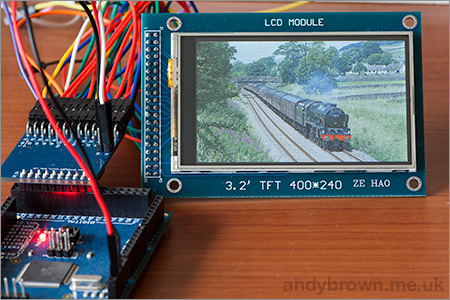
[Andy Brown] wrote in to show off the TFT LCD adapter he’s been working on for connecting inexpensive displays to an Arduino Mega.
These TFT LCD screens can be picked up on eBay for a few dollars. But they’re more suited for 16-bit microcontrollers which operate at 3.3V levels. His adapter board, which plugs directly into the Mega’s dual-row pin header, makes it easier to control these with an 8-bit chip that is running at 5V.
There’s a couple of things that make this happen. First off, he’s included level converter chips to managed the 3.3V/5V issues. Second, he uses latch chips to translate eight pins on the Arduino Mega to sixteen pins on the display. Those chips have a latch pin which holds the output values in memory while the input pins are changed. He manages to drive the latch on just one of the chips using the chip select (CS) line called for by the LCD protocol. This means you don’t lose any extra pins.
Another way to uses the displays with Arduino is to use a smart controller for TFT screens.
















http://hackaday.com/2012/06/20/driving-a-nokia-qvga-screen-with-arduino-or-any-uc/
Similar.
That was also by Andy Brown
The hardware adaptor
I decided to design an adaptor that would feature 5V to 3.3V level conversion as well as a latch that would allow me to reduce the pins required by the data bus from 16 to 8 at the expense of an additional pin for controlling the latch. A total saving of 7 pins over the simplistic solution.
Not quite “This means you don’t lose any extra pins” exactly though.
Don’t almost all of the TFT controllers also support 8-bit mode?
Lots are SPI based.
9 bit SPI appears to be 8 bit parallel, 1 bit control.
your driving it from a mega, im sure 7 pins won’t be needed for most applicatitions
Nice!! I used TFT in Arduino from a lot of time, but this is the fastest driver/lib that I saw!! Congratulations, and thanks for the info!!
Now if we could just get Xwindows to run on it.
Like this…
http://www.youtube.com/watch?v=sQFcCKVpcP8